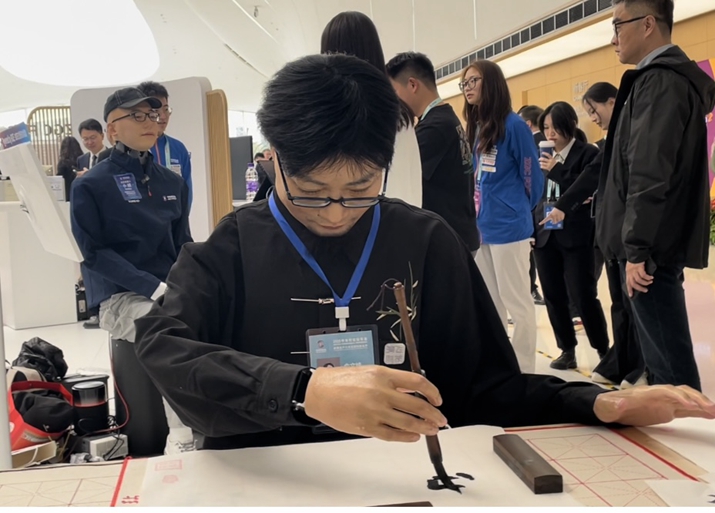
The AI revolution is altering the innovation ecosystem at an unprecedented pace. Breakthroughs in generative AI, big data analytics, autonomous driving, and other fields have rendered conventional IP frameworks increasingly inadequate. A central challenge confronting global IP systems is how to safeguard innovators’ rights while fostering technological progress.
“AI is blurring the boundaries of innovation,” Daren Tang, Director General of the World Intellectual Property Organization (WIPO), said at the Global Intellectual Property Protection and Innovation Sub-forum of the 2025 Zhongguancun Forum Annual Conference. The forum is a state-level platform for global innovation exchanges and partnerships. The 2025 annual conference took place from March 27 to 31.
Tang pointed out that since 2017, patent applications related to generative AI have surged by over 800 percent. But this progress spawns new challenges. When AI-generated content becomes indistinguishable from human creations, questions over IP ownership grow excruciatingly complex.
Tian Xianghong, Deputy Prosecutor General of the Beijing Municipal People’s Procuratorate, cited a landmark lawsuit at the sub-forum. In 2024, a Beijing court heard the country’s first criminal case involving AI-enabled copyright infringement. The defendant, who was accused of using an AI model to alter a painter’s artwork and then selling it as merchandise, was convicted of infringing on the original artist’s rights. During the trial, the court noticed that there are no clear legal provisions for determining copyright ownership of AI-generated content in the country: Should commercially valuable AI-generated content warrant independent IP frameworks?

A digital bionic robot demonstrates calligraphy at the 2025 Zhongguancun Forum Annual Conference exhibition site on March 29 (TAO ZIHUI)
Trends and challenges
In recent years, many countries and regions have amended IP laws to adapt to AI advancements. The European Union’s Digital Services Act, for example,
aims to regulate digital platforms’ responsibilities and enhance IP protection. It mandates platforms to prevent the dissemination of infringing content and act swiftly against violations.
As AI challenges transcend borders, international cooperation emerges as critical to resolving these impasses.
Against this backdrop, China-European IP cooperation is entering a new phase. China accounts for 21.3 percent of the EU’s external imports in 2024, making it the 27-member bloc’s largest trading partner, according to Gyta Berasneviciute, head of the EU IP Key China Program.
However, counterfeit goods and digital piracy remain significant hurdles for European businesses. Berasneviciute highlighted joint efforts between the EU and China to standardize trademark and patent practices, alongside annual copyright seminars for judicial exchanges. Such collaboration not only tackles current infringement issues but also lays groundwork for future global IP rule-making.
The path forward
As the linchpin of global IP collaboration, WIPO promotes cross-border dialogue and harmonizes IP norms. Through multilateral and bilateral mechanisms, countries are jointly exploring new IP protection paradigms.
“As the global IP agency, WIPO supports its members by convening the global IP community in neutral, professional settings to deliberate on AI,” Tang said. “By organizing international conferences and training programs, WIPO offers a platform for experience sharing and consensus building, crucial for global IP protection.”
Additionally, WIPO is spearheading international rule-making for AI-era IP. For instance, it is studying copyright rules for AI-generated content to clarify AI’s role in creative processes, providing benchmarks for national IP frameworks.
“We must view the digital revolution beyond industrial lenses, as it is transforming creative economies,” Tang added. “The key to future innovation lies in synergizing software and hardware—technology and content. Those who master this fusion will lead the innovation ecosystem.”
Leslie Shay, Assistant Director of the Intellectual Property Department of the Government of Hong Kong Special Administrative Region (SAR), shared Hong Kong’s experience in developing a regional IP trading hub at the sub-forum.
The Hong Kong SAR Government launched the original grant patent system in December 2019, which creates a direct route for innovators to seek standard patent protection in Hong Kong with a maximum term of 20 years, providing an alternative to the existing “re-registration” route.
Since the system was put into practice, Hong Kong has received over 1,000 original grant patent applications, with more than half originating from outside the SAR. This underscores the international community’s confidence in and recognition of Hong Kong’s original grant patent system, according to Shay.
Moreover, according to the 2024 Global Innovation Index science and technology cluster ranking published by WIPO, the Shenzhen-Hong Kong-Guangzhou cluster has maintained the second global position for five consecutive years, underscoring the Guangdong-Hong Kong-Macao Greater Bay Area (GBA)’s robust strength in fostering innovation ecosystems. Both Shenzhen and Guangzhou are among the nine cities in Guangdong that comprise the GBA.
“As a core city in the GBA, Hong Kong possesses immense potential to drive the commercialization of scientific research outcomes through our patent system, thereby cementing its status as a regional IP trading hub and international innovation and technology center,” Shay said.
At the sub-forum, Tsinghua University Vice President Jiang Peixue discussed the institution’s talent development initiatives. In November 2023, Tsinghua partnered with WIPO to launch a joint master’s program in IP and innovation policy, recruiting globally to cultivate high-caliber professionals. Taught by WIPO experts and global scholars, the program elevates IP education standards and expands internship opportunities.
Speaking at the sub-forum, Shen Changyu, head of the China National Intellectual Property Administration, underscored the symbiotic relationship between IP systems and emerging productivity. China now holds more than 4.84 million valid domestic invention patents and is the first country to exceed the 4-million threshold worldwide, with 14 high-value patents per 10,000 people. The 2024 WIPO Global Innovation Index ranks China 11th globally.
“Innovation and IP are dynamic, but what endures is our commitment to placing humanity at the heart of the IP ecosystem and using IP as a bridge connecting people,” Tang said. Through institutional reform, international collaboration and talent cultivation, IP protection will serve as a catalyst for global innovation, not a barrier to progress. –The Daily Mail-Beijing Review news exchange item



